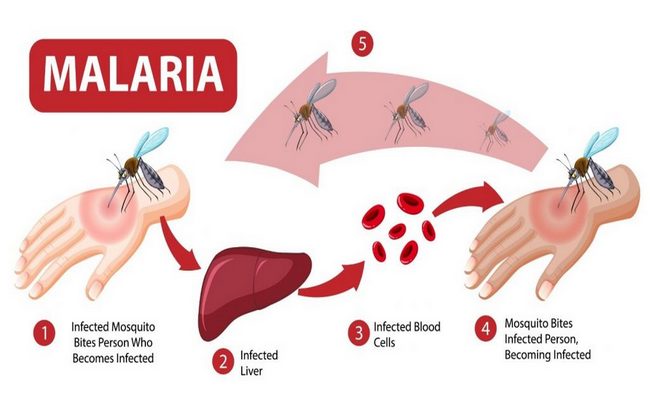What is Malaria Disease?
Malaria is an infectious disease which is caused by plasmodium and transmitted by the bite of female anopheles mosquito, characterized by-fever, anemia, splenomegaly etc. It is a protozoal disease which is caused by infection with parasites of the genus plasmodium and transmitted to man by certain of infected female anopheles mosquito.
Malaria is a mosquito-borne infectious disease which affects humans and other animals caused by parasitic protozoans (a group of single-celled microorganisms) belonging to the Plasmodium type. It causes various sign and symptoms that typically include fever, tiredness, vomiting, and headaches.

Children under 5 years of age are one of the most vulnerable groups affected by malaria, accounting for a large portion of the estimated 445 000 malaria deaths around the world in 2016.
In high transmission areas, partial immunity to the disease is acquired during childhood. In such settings, the majority of malarial disease, and particularly severe disease with rapid progression to death, occurs in young children without acquired immunity. Severe anaemia, hypoglycemia and cerebral malaria are features of severe malaria more commonly seen in children than in adults.
List of Dangerous Types of Malaria Disease:
Falciparum malaria is dangerous as-
- They can infect both mature & immature RBC (reticulocytes). So, there is severe anaemia. On the other hand, other malaria species only infect immature RBC (reticulocyte).
- Falciparum shows resistance to common antimalarial drugs.
- Complications are higher and fatal, e.g.- cerebral malaria, black water fever etc.
- Early diagnosis is difficult, so patient rapidly developed complications.
Why Malaria Disease Cannot Be Eradicated from Bangladesh?
The factors those are responsible for difficulties of malaria eradication programme in Bangladesh are-
1. Administrative failure:
- Shortage of finance, manpower, drugs, insecticides transport,
- Shortage of administrative personnel’s.
2. Technical failure: Development of insecticides in vector and parasitic resistance to drugs.
3. Operational failure: Due to inadequate surveillance, case detection and treatment.
4. General failure:
- Common border of Bangladesh and India,
- Sleeping without mosquito net,
- Poor standard of environmental sanitation,
- Lack of health education.
5. Epidemiological factors:
- Presence of extra-lumax reservoir of infection,
- Presence of human carrier state,
- Presence of sub clinical cases.
How to Prevent and Control Malaria?
The following measures should be taken to prevent and control malaria disease-
1. Measures to be applied by the individual:
- Prevention of man/ Vector contact: Using repellants protection clothing bed-nets screening of houses.
- Destruction of adult mosquitoes: Use of domestic space spray.
- Destruction of mosquito larvae: Peri-domestic sanitation intermittent during of water container.
- Source reduction: Small scale drainage system.
- Measures against malaria parasite: Chemoprophylaxis and chemotherapy.
2. Measures to be applied by the community:
- Prevent of man/ vector contact: Site selection and screening of houses.
- Destruction of mosquito larvae: Using larvicides.
- Source reduction: Prevention of manmade malaria environment sanitation water management.
More questions related to this article:
- What is malaria?
- What do you mean by malaria?
- What type of malaria is dangerous and why?
- Why Plasmodium falciparum is considered more dangerous than Plasmodium vivax?
- Why falciparum infection is thought to be more dangerous?
- Explain why malaria cannot be eradicated from Bangladesh.
- How will you control malaria?
- Write down the controlling measures of malaria.

Maria Khatun Mona is a Founder and Editor of Nursing Exercise Blog. She is a Nursing and Midwifery Expert. Currently she is working as a Registered Nurse at Evercare Hospital, Dhaka, Bangladesh. She has great passion in writing different articles on Nursing and Midwifery. Mail her at “maria.mona023@gmail.com”
